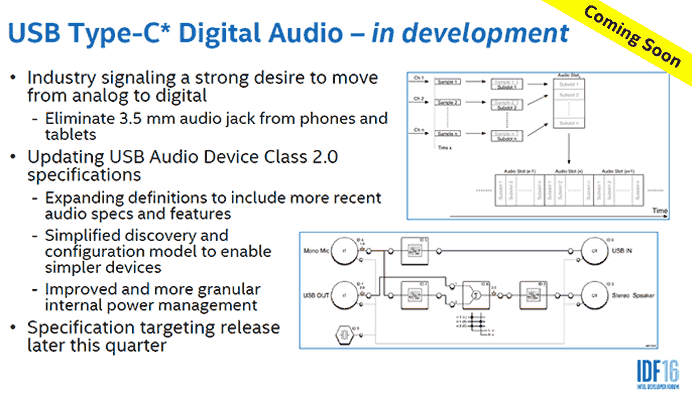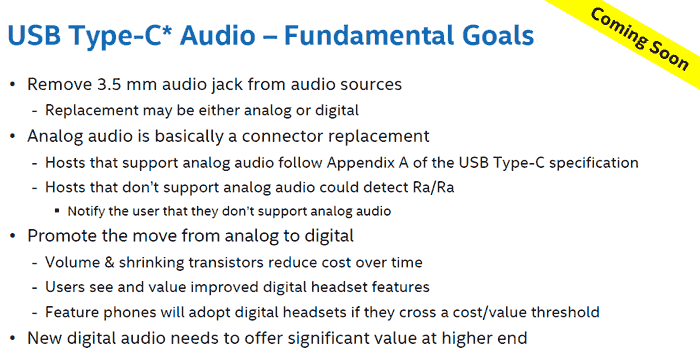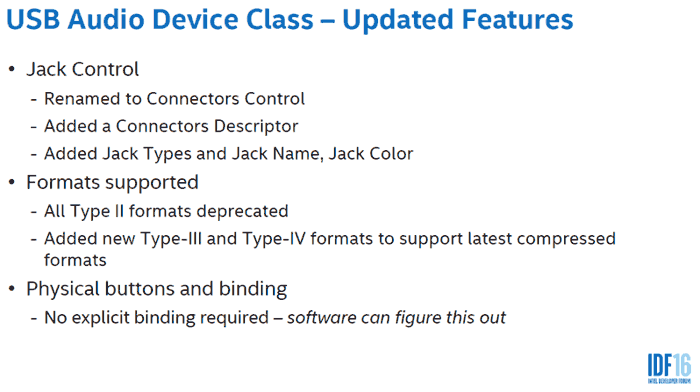Compact, reversible USB Type-C connectors have started to show their potential in all sorts of connectivity solutions. Looking through recent news we can see they have been adopted for data and power delivery, just like the USB ports of old but with improved speeds and wattages available. Then we have seen much greater flexibility though USB-Type C when married to Thunderbolt 3 interfaces, for example, for docks with DisplayPort monitor connections, or even for powerful eGFX solutions.

Now Intel is proposing that the device ubiquitous 3.5 mm mini-jack is replaced with USB Type-C digital audio. As noted by Anandtech, the audio jacks we use today are rather long in the tooth; the original 6.35 mm connector often found on non-size restricted and pro audio equipment was invented in 1878, and the smaller 3.5mm connector seen on all our mobiles, tablets and laptops originated in the 1960s. Furthermore, with device makers aiming at thinner and thinner products, the 3.5mm audio jack has come to be a bit of an impediment.

There are two ways that USB Type-C can be used to replace the 3.5mm audio jack. The flexibility of the connector allows device makers and end users to enjoy analogue and/or digital audio from the connector. The USB Type-C connector has two pins, SBU1 and SBU2, which can be used to transmit analogue audio. For digital audio Intel is finalising USB Type-C Digital Audio technology and is updating the USB Audio Device Class specification to v2.0 to allow audio streaming and syncing. The specification should be finished later in Q2 2016.

A knock on effect from smart devices sporting USB Type-C digital audio is that the new sets of headphones/speakers would require their own amplifiers, DACs and so on, components which currently reside device-side. Having people buy new audio accessories might be difficult; however Anandtech notes that it doesn't necessarily have to be very expensive, with CMedia’s HS-100 digital audio enabling chip for headsets costing just $1.
There have been previous rumours of Apple moving away from the 3.5mm audio jack in upcoming smartphone designs but it would very likely use its own Lightning connector. Other device makers such as Samsung, LG and HTC would likely have to adopt USB Audio in concert to make headset and audio accessory makers really start to migrate.













